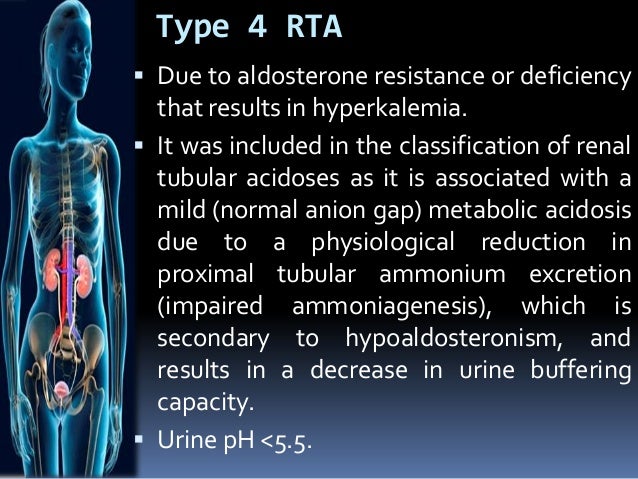


reduced secretion of H+ in distal tubule results inability to maximally acidify the urine.Impaired cation exchange in distal tubule Impaired HCO3 reabsorption in proximal tubule RTA is often detected incidentally through an abnormal blood workup, but some patients present with clinical features such as poor growth, dehydration, or altered mental stateĬOMPARISON OF TYPES OF RENAL TUBULAR ACIDOSIS (RTA).occurs despite a normal or only mildly reduced glomerular filtration rate (GFR).may be incomplete and only develop in the presence of an acid load.results in net acid retention and hyperchloremic normal anion gap metabolic acidosis (NAGMA).primary problem is defective renal acid-base regulation due to impaired ability to acidify the urine and excrete acid.GFR may be normal or only minimally affected.Renal tubular acidosis (RTA) involves defects isolated to the renal tubules only patients manifest as renal failure, often have prolonged survival and develop chronic complications such as bone demineralisation.causes high anion gap metabolic acidosis (HAGMA).accumulation of acidic anions such as phosphate and sulfate occurs.decreased glomerular filtration rate (GFR) (e.g.involves injury to glomeruli and tubules.Uraemic acidosis results from the loss of functional nephrons

the anion gap may be normal, due to renal tubular acidosis (RTA).the anion gap may be elevated, due to uraemic acidosis.Metabolic acidosis can occur in both acute and chronic renal disorders


 0 kommentar(er)
0 kommentar(er)
